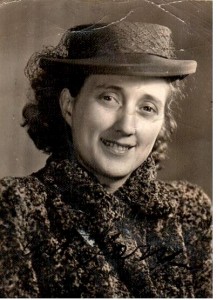A Wrinkle in Time
A Wrinkle in Time
Webster defines the word wrinkle as a small ridge or furrow on a smooth surface, a change from the regular or something new or different. Having worked with the wrinkles on the face or body for the last 30 years I have had the opportunity to see lots of changes (wrinkles) that “appear over night”. These wrinkles are an inevitable part of the natural aging process. As we become older our skin gets thinner, drier and less elastic. Our skin’s ability to protect itself from damage is also reduced as we age.Eventually wrinkles, creases and lines form on our skin. A person’s genetic makeup also influences how wrinkly we become, and when and where wrinkles start appearing. How many times have I heard “I look in the mirror and see my mother”? Even though wrinkles can give people an aspect of wisdom, most people do not welcome them. Billions of dollars are spent globally on treatments (some good, some not so good) to get rid of them.
Most wrinkles tend to appear in the parts of the body which receive the most sun exposure, including the: backs of the hands, face, neck and chest. The factors that are known to promote wrinkles are: SMOKING –Decreases the blood supply to the skin,
SKIN TONE – Lighter skin tones experience higher levels of sundamage. HAIR – Body parts that are shaded by hair have less sun damage. EXPOSURE TO UV – Body parts that are covered by clothing, hats, glasses, and sunblocking agents are less likely to wrinkle. Finally GENETIC FACTORS – If your parents developed wrinkles earlier than other people, your chances of also doing so are significantly higher than somebody whose parents developed wrinkles later than others. FACIAL EXPRESSIONS – People who repeatedly frown and squint will develop fine lines and wrinkles earlier than others who do not. Each time we use a facial muscle a groove forms under the surface of the skin. When you are young the skin springs back, but as it gets older and loses its flexibility springing back becomes harder and less frequent, resulting in more permanent grooves.
Treatments vary from over the counter (no prescription) creams whose effectiveness is questionable in comparison to medical procedures and surgery. Some “OTC” products make great claims with slight to modest results. If there are any results it usually does not last long. Prescription strength products that address overall skin health is more effective with more lasting results. Medical procedures such as Microdermabrasion that removes the outer most layers of skin cells and stimulates new skin cell growth. Repeated treatments are necessary to maintain a smoother appearance to the skin. Laser (light source)
resurfaces the epidermis that is destroyed by a beam of light while the underlying dermis is heated up to stimulate new cell growth. Botox blocks the chemical signals that cause muscles to contract. It is injected in small doses into targeted muscles. If
the muscles can no longer tighten the skin flattens. Repeated injections are required. Effects last about three to four months.
Chemical peels are chemical solutions applied to the skin surface to cause the affected skin to slough off and peel creating a smoother skin surface. There are varying levels of chemicals used, thus a varied result. Soft tissue fillers such as hyaluronic acid (Juvederm) are injected into deeper face wrinkles smoothing them out, giving the face more volume. Ultimately, surgical intervention removes the excess skin creating a tighter smoother face. Facelift, Brow lift and Blepharoplasty preformed by a board certified plastic surgeon (Dr. Conkright) can provide more satisfying results for more severe wrinkles and folds. How good the results are, depends on several factors, including where the wrinkles are, as well as their depth. There is no current treatment that can stop the ageing process.
Eventually everybody will have wrinkles and lines that become more prominent over time. Remember the saying, “An ounce of prevention is worth a pound of cure”? The best we can do is to slow the wrinkling process down by adhering to the following rules: Get plenty of sleep. Protect your skin from the sun (UV rays). Don’t smoke. Don’t sweat the small stuff. Drink lots of water. Use products on the skin that promote a healthy glow. Exercise. And SMILE because each day is a gift. All
advice given to me over my lifetime from my mother (pictured below) Lorene Vincent Williams, whose radiant skin was a shining example of what good genes and good skin care could do.
I look in the mirror and say “I am my mother?” I hope so……
Martha

